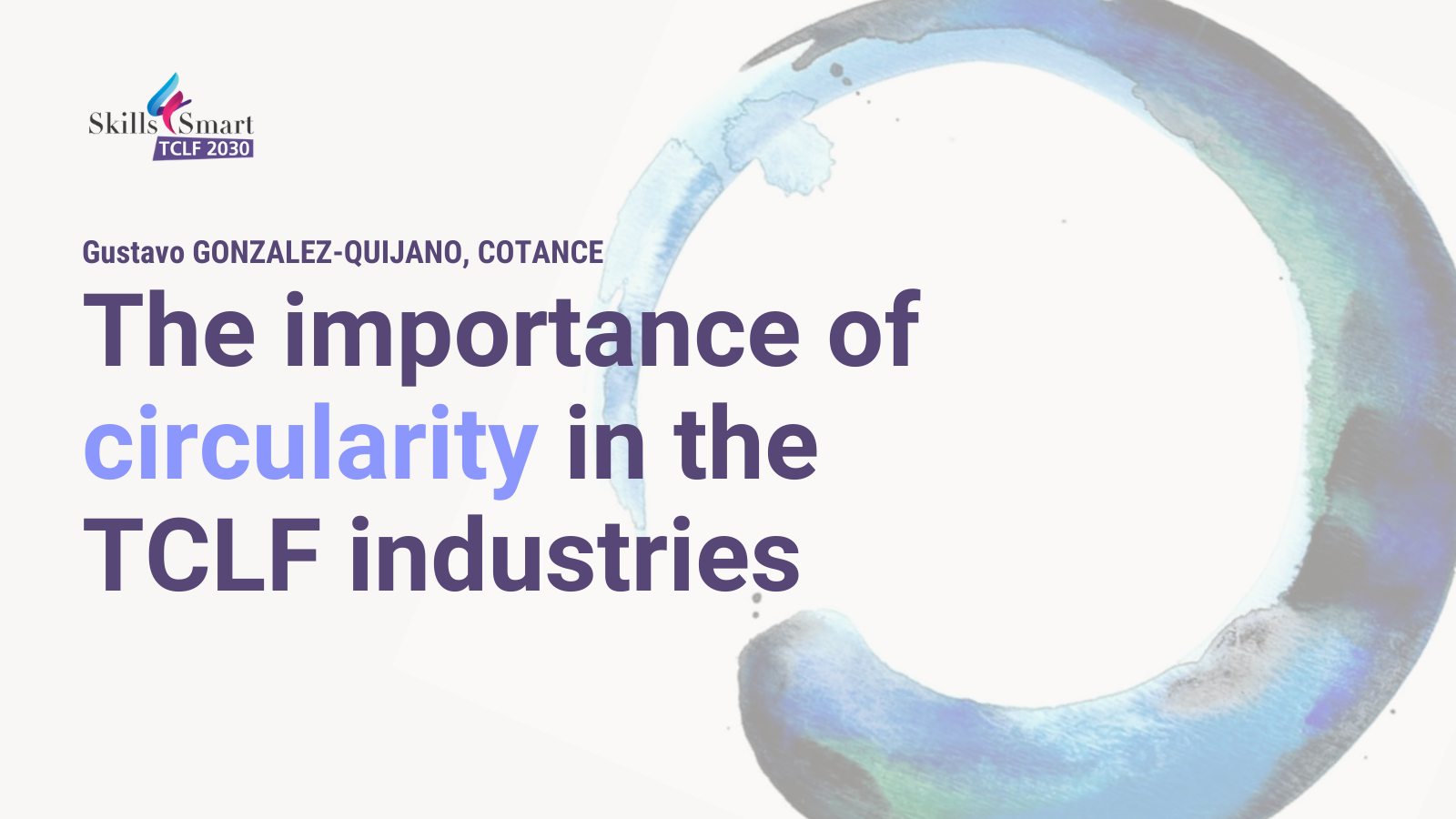The TCLF sectors are often accused of being among the most polluting industries, and it is true that in the past much pain to the planet could have been avoided with foresight and responsibility.
While modern TCLF production sites in Europe have long since changed and today operate under strict environmental considerations, there are still far too many non-EU countries that supply materials, components, and finished goods that do not comply with international environmental standards, thus continuing to taint the image of the sector. This will change!
Indeed, the EU has the ambition to put an end to pollution driven through consumption and to the placing of the planet beyond its limits. The “EU Green Deal” launched in December 2019 and its ancillary strategies (Circular Economy Action Plan, Farm-to-Fork Strategy, Textile Strategy, etc…) have all as objective to revert Climate Change and to deliver a more sustainable economy. Here “Circularity” is the keyword. What does this mean in practice? It means a societal change, a change of paradigm, turning away from a linear way of life where goods were produced, consumed, and simply thrown away, towards a circular economy, where goods are produced, consumed, repaired, and recycled. The circular economy is an economy in which manufacturing plants experiment with industrial symbiosis, where the residues from one process or sector become the raw materials for another product or sector. However, this concept also needs that products are already conceived and designed with this purpose so that components can be more easily recovered, and materials better recycled.
Is this notion of circularity so foreign to the TCLF sectors? Not really!
Take for instance the leather industry. Leather is used for a myriad of fashion and technical applications from footwear, to handbags, from furniture to car interiors, from gloves to pants and jackets. And leather isn’t anything else than the recycling of a residue of the meat industry. Tanners recover the hides & skins of animals slaughtered for human consumption (because there is no cow, sheep, or goat that is killed for its skin!) and transform them into a beautiful, durable and sustainable production material. Research and development have led to process innovations that permit the recovery of the hair to make organic fertilisers, of fleshing to produce biofuel, of splits to make collagen and gelatine, and of leather waste to make a composite called “leather fibre board” which stiffens the linings of footwear and leather goods. There will soon be zero waste from European leather.
Similar developments have also come up in the textile industry. Think of this new world of fibres issued from cellulose and think of all the new non-woven materials that are used today in many fashion applications as fillers or carpets. But there is much more…
For footwear and apparel producers, the challenge is somewhat different. For them, the point is foremost a matter of choice of materials, moving away from unsustainable ones, and concentrating on those with better environmental credentials. But there is more, here is where design (eco-design) comes into play. The future will be for those products that manage to minimise cutting waste and where the unavoidable residues are further reused and valorised in the production of other smaller goods.
Yet, there is still quite a lot of work ahead in the TCLF sectors. The complexity and multiplicity of materials and components make a result in still low recycling rates. But with the support of research and the latest technologies, these industries are ready and committed to succeed. What it needs now are young ambitious professionals to make this aspiration a reality.
Gustavo GONZALEZ-QUIJANO, COTANCE


